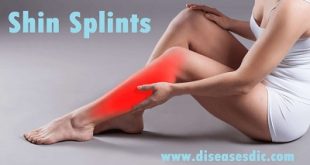Definition
A Morton’s Neuroma is a benign (noncancerous) swelling along a nerve in the foot that carries sensations from the toes. The reason the nerve starts to swell is unknown. But once swelling begins, the nearby bones and ligaments put pressure on the nerve, causing more irritation and inflammation. This produces burning pain, numbness, tingling, and other abnormal sensations in the toes. A Morton’s neuroma also is called an interdigital neuroma, intermetatarsal neuroma, or a forefoot neuroma.
A Morton’s neuroma usually develops between the third and fourth toes. Less commonly, it develops between the second and third toes. Other locations are rare. It also is rare for Morton’s neuroma to develop both feet at the same time. The condition is much more common in women than men, probably as a result of wearing high-heeled, narrow-toed shoes. This style of shoe tends to shift the bones of the feet into an abnormal position, which increases the risk that a neuroma will form. Being overweight also increases the risk of Morton’s neuroma.
Anatomy of the foot
There are many bones in the foot. They can briefly be divided into the tarsal bones, the long bones (metatarsals) and the phalanges. The tarsal bones are the larger bones that form the back section of the foot, with the calcaneum being the largest. There are five metatarsal bones and these are given names from the first to the fifth. The first metatarsal bone is the largest and is the bone that joins the big toe. Each toe has three phalanges, except the big toe which only has two.
There are many nerves, muscles, and ligaments within the foot. Of note, the common plantar digital nerves run between the metatarsal bones in the foot. These have branches that supply sensation to the skin of the toes.
History
The affliction of the forefoot was first described by Durlacher in 1845. Later in the nineteenth century, Morton ascribed the pain to pathology of the fourth metatarsophalangeal joint. The initial treatment was to remove the fourth metatarsal head to treat the pain. At this time our understanding of the pathology is well-defined. Morton’s neuroma is now known to be perineural fibrosis.
Morton’s Neuroma epidemiology
The onset of Morton’s neuroma is usually between 45 and 50 years of age with women affected much more than men. Pain onset is often insidious. However, neuromas can be present without clinical signs. One study reported neuromas present in 33% (19/57) of asymptomatic individuals.
Risk factors of Morton’s Neuroma
Factors that appear to contribute to Morton’s neuroma include:
High heels: Wearing high-heeled shoes or shoes that are tight or ill-fitting can place extra pressure on your toes and the ball of your foot.
Certain sports: Participating in high-impact athletic activities such as jogging or running may subject your feet to repetitive trauma. Sports that feature tight shoes, such as snow skiing or rock climbing, can put pressure on your toes.
Foot deformities: People who have bunions, hammertoes, high arches or flatfeet are at higher risk of developing Morton’s neuroma.
Morton’s Neuroma causes
Morton’s neuromas develop in response to repetitive overload on the foot.
Causes for Morton’s neuroma:
High-heeled, narrow shoes- Morton’s neuroma is more common in women, due to use of high-heeled, narrow shoes that place the foot bones in a strained position.
Foot deformities– People with bunions, hammertoes, flat feet or overly flexible feet are at increased risk for neuroma growth.
Certain sports- High impact activity (running, court sports) subjects your feet to repetitive trauma. Sports that require tight shoes (snow skiing) put pressure on the foot.
Excessive weight- Being overweight increases foot strain.
Symptoms of Morton’s Neuroma
If you have Morton’s neuroma, you may have one or more of these symptoms where the nerve damage is occurring:
- Tingling, burning or numbness
- Pain
- A feeling that something is inside the ball of the foot
- A feeling that there is something in the shoe or a sock is bunched up
The progression of Morton’s neuroma often follows this pattern:
- The symptoms begin gradually. At first, they occur only occasionally when wearing narrow-toed shoes or performing certain aggravating activities.
- The symptoms may go away temporarily by removing the shoe, massaging the foot or avoiding aggravating shoes or activities.
- Over time, the symptoms progressively worsen and may persist for several days or weeks.
- The symptoms become more intense as the neuroma enlarges and the temporary changes in the nerve become permanent.
Complications
Complications may include:
- Difficulty walking
- The trouble with activities that put pressure on the foot, such as pressing the gas pedal while driving
- Difficulty wearing certain types of shoes, such as high-heels
Diagnosis and test
In order to tell if you have Morton’s neuroma, your doctor may only need to ask you about your symptoms and examine your foot. But you may need further tests to make sure.
To diagnose you, your doctor can use:
Symptom history- Your doctor will ask about the pain you’re having, when it started, the kinds of shoes you wear, and your work and other activities.
Physical exam- Your doctor will probably first press on your foot to check for a tender spot. If you feel a sort of click between the toes, that can also be a sign of Morton’s neuroma.
X-ray- An X-ray might help your doctor rule out other potential problems, such as a fracture.
Ultrasound- This test uses sound waves to create images and is a good way to spot Morton’s neuroma and other conditions that involve soft tissue.
Range of motion test- Your doctor will move your foot and toe around to see if the cause of your pain could be arthritis or joint inflammation.
MRI- Magnetic resonance imaging uses radio waves and a magnetic field to look at your soft tissues. Doctors don’t usually use MRIs for diagnosing Morton’s neuroma, because it’s an expensive test.
Treatment
Non-Operative Treatment
Most non-operative treatment is usually successful, although it can take a while to figure out what combination of non-operative treatment works best for each individual patient. Non-operative treatment may include:
- The use of comfort shoe wear.
- The use of a metatarsal pad to decrease the load through the involved area of the plantar forefoot.
- A period of activity modification to decrease or eliminate activities, which may be exacerbating the patient’s symptoms. For example, avoiding long periods of standing or other activities that result in significant repetitive loading to the forefoot can be very helpful. Wearing high heels should be avoided.
- Local can help decrease inflammation associated with the nerve. However, this does not necessarily address the underlying loading forces that may be causing the injury to the nerve in the first place.
Metatarsal pad
An injection of steroids may help to control symptoms. It has also been proposed that an alcohol injection in and around the nerve will cause a controlled death to the nerve and subsequently eliminate symptoms. However, there have been no good quality research studies to demonstrate the benefit of this procedure above and beyond the other standard, non-operative treatments available. In addition, there is a concern that alcohol will cause excessive scarring and damage to other important structures in the area.
Surgical and other procedures
If conservative treatments haven’t helped, your doctor might suggest:
Injections: Some people are helped by the injection of steroids into the painful area.
Decompression surgery: In some cases, surgeons can relieve the pressure on the nerve by cutting nearby structures, such as the ligament that binds together some of the bones in the front of the foot.
Removal of the nerve: Surgical removal of the growth may be necessary if other treatments fail to provide pain relief. Although surgery is usually successful, the procedure can result in permanent numbness in the affected toes.
Example of a neuroma after excision.
Morton’s Neuroma prevention
- Do not wear tight shoes or high-heeled shoes for long periods.
- Wear shoes with a wide toe box so that your toes are not squeezed or cramped.
- Do wear athletic footwear with enough padding to cushion the balls of the feet when you are exercising or taking part in sports.
 Diseases Treatments Dictionary This is complete solution to read all diseases treatments Which covers Prevention, Causes, Symptoms, Medical Terms, Drugs, Prescription, Natural Remedies with cures and Treatments. Most of the common diseases were listed in names, split with categories.
Diseases Treatments Dictionary This is complete solution to read all diseases treatments Which covers Prevention, Causes, Symptoms, Medical Terms, Drugs, Prescription, Natural Remedies with cures and Treatments. Most of the common diseases were listed in names, split with categories.







